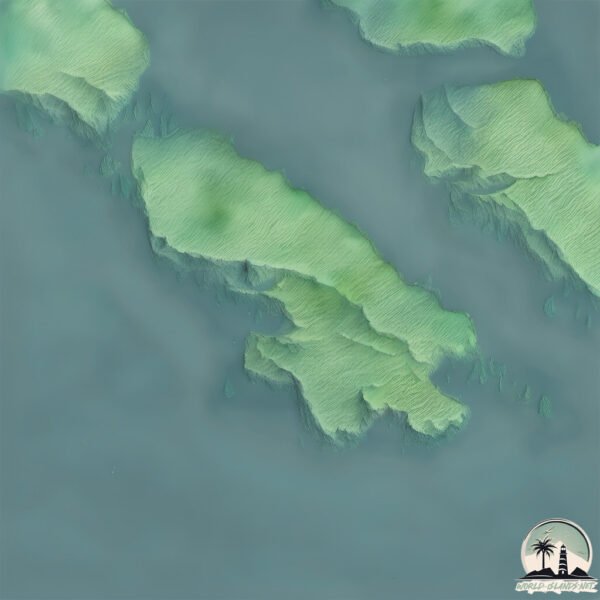Welcome to Estevan , a Temperate island in the The Coastal Waters of Southeast Alaska and British Columbia, part of the majestic Pacific Ocean. This guide offers a comprehensive overview of what makes Estevan unique – from its geography and climate to its population, infrastructure, and beyond. Dive into the details:
Geography and size of Estevan
Size: 19.4 km²Coastline: 51.5 kmOcean: Pacific OceanSea: The Coastal Waters of Southeast Alaska and British ColumbiaContinent: North America
Estevan is a Medium Island spanning 19 km² with a coastline of 51 km.
Archipel: –
Tectonic Plate: North America – Covers North America and parts of the Atlantic and Arctic Oceans, characterized by diverse geological features and varying levels of seismic activity.
The geographic heart of the island is pinpointed at these coordinates:
Climate and weather of Estevan
Climate Zone: TemperateClimate Details: Temperate Oceanic ClimateTemperature: Warm Summer
Climate Characteristics: Known for its moderate year-round temperatures with ample rainfall and no dry season. Warm summers are characteristic.
Topography and nature of Estevan
Timezone: UTC-08:00Timezone places: America/Los_AngelesMax. Elevation: 208 m Mean Elevation: 41 mVegetation: Evergreen Needleleaf ForestTree Coverage: 74%
The mean elevation is 41 m. The highest elevation on the island reaches approximately 208 meters above sea level. The island is characterized by Hills: Gently sloping landforms with rounded tops, having a maximum elevation between 200 and 500 meters. Hills contribute to a varied landscape on islands.
Dominating Vegetation: Evergreen Needleleaf Forest
Vegetation: 8 vegetation zones – Very Highly Diverse Island
Infrastructure and Travelling to Estevan
Does the island have a public airport? no .
Does the island have a major port? no .
The mean population of Estevan is 0 per km². Estevan is Uninhabited. The island belongs to Canada .
Continuing your journey, Campania is the next notable island, situated merely km away.
Estevan Point Bombing : A Shot in the Dark (1995) - The Fifth Estate
Why was a lighthouse on Vancouver Island bombed during World War II and who did it? Linden MacIntyre investigates the ...
Estevan Point Bombing : A Shot in the Dark (1995) - The Fifth Estate
Why was a lighthouse on Vancouver Island bombed during World War II ...
Why was a lighthouse on Vancouver Island bombed during World War II and who did it? Linden MacIntyre investigates the ...
Estevan Group - Nichol Island, Barnard Island, Trutch Island
These videos are of a coastal aerial video imaging (AVI) survey ...
These videos are of a coastal aerial video imaging (AVI) survey conducted in northern British Columbia during 1999 from Finnerty ...
Estevan Group - Trutch Island, South Banks Island
These videos are of a coastal aerial video imaging (AVI) survey ...
These videos are of a coastal aerial video imaging (AVI) survey conducted in northern British Columbia during 1999 from ...
Canada is classified as Developed region: G7: Group of Seven – Major advanced economies, including Canada, France, Germany, Italy, Japan, the United Kingdom, and the United States. The level of income is High income: OECD.
News – Latest Updates and Headlines from Estevan
Stay informed with the most recent news and important headlines from Estevan. Here’s a roundup of the latest developments.
Loading...
Please note: The data used here has been primarily extracted from satellite readings. Deviations from exact values may occur, particularly regarding the height of elevations and population density. Land area and coastline measurements refer to average values at mean high tide.

